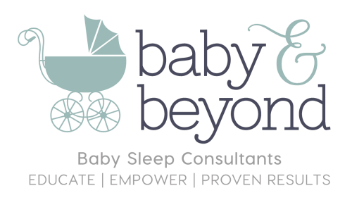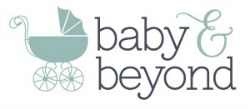Tongue Ties, Lip Ties…
Article by Janferie Dewar, Baby and Beyond Sleep Consultant, Registered Nurse, Breastfeeding Educator
Fact, Fad or Fiction?
Tongue ties, Lip ties – is this a new fad for new-borns? or a relevant and significant problem that should be treated: and if so how and what does treatment involve?
Recently I attended a lecture on this topic made available to Nurses and Midwives through a DHB, and two Frenectomy Day Clinics run by Changing Faces in Hamilton, a leading provider of treatment in New Zealand. This is part of my ongoing professional development in breastfeeding, as a Baby and Beyond Consultant and Registered Nurse.
Health professionals hold strong opinions both for and against the recent surge in treatment of lip and tongue ties. However, it is the experiences of the mother’s themselves who have found this an invaluable procedure in enabling them to continue breastfeeding and resolve issues such as pain, nipple damage and poor supply that is the most compelling. In the 2005 Hogan Study 95 % of mothers reported improved breastfeeding within 48 hours of tongue tie division, compared to just 5% of mothers in the control group. A Systematic Review in 2015, evaluated 29 small studies around the procedure which reported improved breastfeeding outcomes after treatment, this was mainly based on the mothers describing better attachment, less maternal pain and increased milk transfer.
History reveals this is not actually a ‘modern’ problem as records by William Moss, a surgeon from Liverpool in the late 18th century document that tongue ties were being treated immediately upon their noticed interference with breastfeeding. There are historical references to tongue ties found in Spanish Medical Text from the 16-18th Centuries, and in the middle ages in France, that a midwife who inspected the frenulum linguae of a new-born would cut it with her fingernail if it appeared bothersome, and if suckling difficulties persisted. In Europe this was also a common practice for midwives who kept a sharp fingernail specially for this purpose up until the 19th century. Fortunately, things have progressed since then and it is now a safe and sterile procedure!
Some experts attribute the rise in tongue tie releases to renewed emphasis on the importance of breastfeeding, leading mothers with feeding problems to persevere when they would previously have given up.
What are lip and tongue ties?
Tongue ties can be seen in around 10 % of babies and occurs when the membrane between the tongue and the floor of the mouth is too tight or too short restricting the movement of the tongue. A formal Classification system is known as the Kotlow Diagnostic Criteria is a guide to the severity of the tongue tie/restriction. It was interesting to observe in the Frenectomy Clinic the Class 1, ties where the new-born presented with a tie on the very end of the tongue anchoring it down, leaving the tongue unable to be extended out of the mouth at all. Without treatment a tongue tie can mean things we take for granted like licking our lips or an ice cream would not be possible, as the tongue is not free to move naturally.
Lip ties, also have a Classification system, and describe where the upper lip is attached to the gum by a thin membrane called the Labial frenum. In cases where this membrane is too tight or short, lip movements can be affected. Untreated a Class 4 lip tie may go on to effect dental development in some leading to a gap between the two front teeth.
Lip and tongue ties are commonly found together in an infant as the oral development prenatally is by a similar process. There can also be a hereditary factor where a parent also one or both of these ties present.
Why do they matter?
For a baby to latch to the breast the tongue and lips are very involved. This is described in an article called ‘Tongue Tie from Confusion to Clarity’ by Carmen Fernando, an Australian Speech-Language Pathologist,
“The infant needs to open the mouth widely enough (gaping) to allow the tongue to protrude forward, past the gum ridge, and then it must take a big mouthful of the breast. This ensures that:
- The milk sinuses are massaged by movements of the baby’s tongue and by pressure from the lower alveolar ridge causing the release of milk which is ejected through the nipple.
- Peristaltic movement of the tongue, (rippling, from the front of the tongue to the back), strokes the breast, draws out and maintains the flow of milk.
- These movements of the tongue also stimulate the nipple to elongate, so that it is pointing down the baby’s throat, and directing milk towards stomach.
When a tongue tie is causing problems with breastfeeding, the baby often does not open their mouth widely, and so cannot latch on to the breast at the correct angle. Instead they may latch onto the nipple, and ‘gum’ or chew it, causing severe pain and eventually, nipple damage, sometimes followed by infection or mastitis. The rippling tongue movement may not occur, or it may occur only on one side of the tongue, so that the nipple does not elongate. This means milk may not be directed correctly for swallowing causing coughing, gagging, choking, or vomiting. Since the latch is not correctly positioned, the sinuses where milk is stored are not stimulated to release milk. “
A baby with a tongue or lip tie may be unable to make a good seal around the breast with their lips, resulting in milk dribbling from the mouth and noisy sucking. Interestingly this can be seen in the latch of either a breast or bottle-fed baby. Untreated lip and tongue ties do lead to breastfeeding problems for some babies, they may be unable to latch and suck well due to their oral restrictions which can lead to ineffective milk transfer, weight gain issues, air being swallowed and excessive crying. Some also will have a sucking blister form on their lip. Untreated, future dental issues can occur with the growth and development of the palate, overcrowding and risk for tooth decay. Other studies have identified lip and tongue ties contribute to some forms of speech impediment, reflux, snoring and sleep apnoea.
Mothers who have experienced breastfeeding problems, describe the frustration, anxiety and pain this can cause. In my own experience of breastfeeding four babies, I have had damaged nipples, mastitis leading to a hospital admission, poor milk supply, infant reflux and weight gain issues. Looking back having an assessment for lip/tongue ties would have been useful, and one of mine now a teen was found during orthodontic treatment to have a tongue tie. Which is of course the one who I had the most difficulties with trying to breastfed, and with their weight gain and reflux symptoms.
In Clinic I saw a variety of lip and tongue ties being assessed in babies from only a few days old through to several months in age. Some mothers were experiencing breastfeeding difficulties, i.e. damaged nipples, mastitis and difficulty latching, others had a history of a previous child with a tie and wanted the new baby reviewed. However, because breastfeeding difficulties can have a variety of causes so assessment from your midwife LMC, or a Lactation Consultant is always recommended in the first instance. And despite having definite tongue or lip ties some babies will go on to feed effectively without treatment, as other factors come in to play such as the mothers supply and let down.
How they are treated?
Commonly these are picked up in the new born phase by the mother, midwife or lactation consultant, as the tie may be visually obvious or suspected if breastfeeding difficulties are present. The lip or tongue tie is assessed and parents can decide if they will proceed to have it freed with either surgical scissors and a snip by a Midwife or Lactation Consultant, or laser in a procedure called a Frenectomy performed in a Clinic settling by a Specialised Dentist.
At the Clinic run by Changing Faces in Hamilton around 4000 these procedures have been performed using a Waterlase technique described below. Dentist and Clinic founder Ron Ritchie is recognised for his expertise in this field parents travel from around New Zealand to the Clinic for assessment and treatment.
The laser uses concentrated light and water to cut and cauterize the frenulum. Because of this, laser frenectomy:
- Is virtually pain-free
- Requires no anaesthesia, which is especially important for infant-care
- Takes only one to two minutes, for the whole procedure
- Has a much lower risk of infection
- Produces very little bleeding
- Requires no sutures
- Provides for a shorter healing and recovery time
I have been nursing in a Surgical Ward for many years and was impressed with how simple and quick the procedure was. While there was some brief protesting from the babies, this appeared to be more due to being firmly swaddled and having their mouth positioned wide open than from any pain associated with the laser. They were settled immediately post procedure and able to be put to the breast for comfort if desired. Parents can be present during the procedure if they wish, however most choose to wait the few minutes in the Clinic rooms.
Post procedure care
At the one week follow up assessment mum I met commented that latching was easier and more effective, and that they were more confident now about continuing to breastfeed.
The Clinic parents are given education around the wound healing, and exercises or stretches that are carried over about 4 weeks, 4-6 times a day to prevent any re attachment. These are simple to do, however may cause some oral discomfort for the baby during the stretch. Carrying out exercises around nappy change time, instead of before a breast fed will reduce the risk of a negative association or aversion being formed by the baby to the breast.
Looking to the future
Around New Zealand services and cost vary and can range from under $100 to $700 in some centres, and there are calls for the Health Ministry step in, to ensure fair access nationwide and “a rational and measured approach. Campaigner and mother Kylie Hickey has received the support of more than 6000 people who have signed her petition which asks the Ministry of Health to revisit how tongue and lip ties are diagnosed and treated. he petitions was inspired by Hickey’s own experience in her struggle to breastfeed her son Kale, 1, when he was born.
Kale was diagnosed with tongue tie, a piece of tissue connecting the tongue to the floor of his mouth. “Can you imagine the heartbreak when you get told ‘breast is best’ – I felt like I had failed as a mother in the first 24 hours “The ministry needs to recognise tongue tie as a potential impediment to breastfeeding and they need to look into the less than average systems in place that currently address the issue,” said Kylie. There needs to be widespread education, coherent diagnosis, a timely response to fixing it, and sufficient support services following any procedure.” In response to this the Ministry of Health will be asking DHB maternity quality and safety programme coordinators to check all DHBs have policies that cover equity of access for assessment, diagnosis and treatment of tongue-tie.”
From what I have read and observed the treatment of lip and tongue ties is a valid choice for babies who show obvious physical ties or present with breastfeeding difficulties that can be attributed to them. Yes, we are hearing more about them, and that is a positive thing as parents, and maternity providers become increasingly aware of the impact they can have in breastfeeding and other oral problems.
Complied by Janferie Dewar
Baby and Beyond Consultant and Registered Nurse
References
https://www.stuff.co.nz/life-style/parenting/baby/…/tongue-ties–to-snip-or-not-to-snip? https://kidspot.co.nz/kidspot/thousands-of-parents-support-tongue-tie-petition/
https://www.ncbi.nlm.nih.gov/pmc/articles/PMC3310719/
The milkmeg.com, https://tonguetie.net/
Breastfeeding Study Day 2017, WDHB


